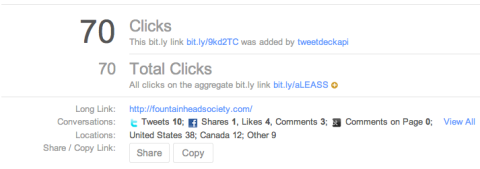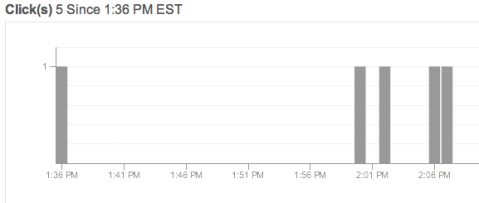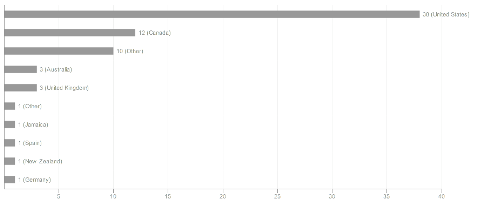 Twitter is a powerful marketing tool. But have you considered using the power of Twitter to enhance marketing efforts—social media or not? This article will show you how.
Twitter is a powerful marketing tool. But have you considered using the power of Twitter to enhance marketing efforts—social media or not? This article will show you how.
Most people talk about Twitter in terms of getting to know people, building lists and using followers. But for marketers and business owners, that's just the start.
The Laser Focus of Twitter
One of the reasons I prefer Twitter to Facebook is that it's much more focused, and in that regard, is much more business-oriented. As opposed to Facebook, where business and social are separated by pages and profiles, Twitter combines it all together in an easy-to-follow format.
Better yet, the discussion and feedback loop occurs in real time, which means that you can achieve instant results.
So what does this mean, and why is it so important?
Imagine waking up every morning to a room full of fans, peers, and associates. How would you react? What if they were waiting for you to say something?
Would you just talk about the weather, or would you say something more meaningful?
Let's imagine that this happened every day, and that each day you had the same opportunity to speak to these people. Sure, some have left, and there are some new faces, but each day the dynamic remains the same.
If you were smart, you'd probably improve your daily speech to a point that you can captivate most of the room with little effort, so that you could move them to action.
Now, swap out the room full of people with your list of Twitter followers and think about the power you have. Essentially, you have anywhere from a few dozen to a few thousand people ready to listen to what you're saying. The trick then is to figure out how to say it in a way that they respond to.
Getting it yet?
Every tweet you send is a chance for you to hone your approach to your audience in a way that increases your ROI and ROE (Return on Engagement, or Effort, take your pick). Furthermore, thanks to the analytic features of most URL shortening services, you can track what people are clicking on, over time, in a way that works just like split-testing would with direct response advertising.
Think about this for a minute… Instead of paying thousands to hire a copywriter and test direct response campaigns, you can test them on your own and see immediate results.
How to Use Twitter Analysis
Here's how you do it:
Get World-Class Marketing Training — All Year Long!
Are you facing doubt, uncertainty, or overwhelm? The Social Media Marketing Society can help.
Each month, you’ll receive training from trusted marketing experts, covering everything from AI to organic social marketing. When you join, you’ll also get immediate access to:
- A library of 100+ marketing trainings
- A community of like-minded marketers
- Monthly online community meetups
- Relevant news and trends updates
#1: Add a Plus to bit.ly Links
If you've been using TweetDeck or another Twitter service that uses bit.ly links, then here's a great tip:
Go through your timeline and pull out bit.ly links, paste them into your browser, and add a “+” on the end. This will automatically send you to the bit.ly statistics page for that link, which gives you conversation history, clicks and regional analysis.
Not only is this a great way to yank out and measure the effectiveness of your tweet history, but it also gives you the opportunity to analyze your competitors!
Want to know how well someone else's tweets are faring? Pull out the “+” and you're in business.

Discover Proven Marketing Strategies and Tips
Want to go even deeper with your marketing? Check out the Social Media Marketing Podcast! Publishing weekly since 2012, the Social Media Marketing Podcast helps you navigate the constantly changing marketing jungle, with expert interviews from marketing pros.
But don’t let the name fool you. This show is about a lot more than just social media marketing. With over 600 episodes and millions of downloads each year, this show has been a trusted source for marketers for well over a decade.


#2: Split-Test Tweet Headlines
Now that we've pulled out some of your old tweets, let's test them against some fresh ones. Take a look at what didn't work, and think about how you can play with the content in order to create a new test.
You've only got 140 characters to work with, so you have to be concise. This works in your favor because it simplifies your message in the same way an AdWords headline does. Simple is good.
Try an old link with a new headline and see what happens. Did more people click this time or last? When did most people click? Which people click on everything, and which don't?
Asking (and answering) these types of questions can give you insight on how to market your business in the social media space, especially if you continue to split-test against winning headlines.

#3: Split-Test Time Zones
Using headline split-tests, you'll quickly learn how to approach your followers in a way that encourages them to respond, but what about followers in different time zones? How do you handle that?
Using any Twitter scheduling service, you can easily learn when your tweets are most effective. Simply schedule the same tweet (using a different link) throughout different parts of the day. Maybe start with every 4-6 hours, and then refine your approach as the data comes in.
You might learn that even though you tweet from the U.S., your biggest response comes from Australia when it's your evening and their morning. If that's the case, you can adjust your online interaction in a way that corresponds to when you have the greatest impact, and if that can't be done, then you can simply schedule your Tweets to repeat throughout the day.

Put It All Together
Now that we've assembled a nice analytics package, let's crank it up to 11. To start with, make sure that you're using your most powerful headlines when it counts, and shelving them when it doesn't. A customer reply might not necessitate a powerful call to action, but a link to a new product or blog post should.
Also, take note of the influencers you attract and what they're tweeting on your behalf. Find out how you can get them to do more of it.
Next, take what you've learned and apply it to your content marketing strategy. The same things that worked for tweets will probably work for releasing blog posts, podcasts and emails.
Copy headlines, schedule broadcasts and release posts when people respond most rather than when it's convenient. This could make a significant impact on your reach, especially if you haven't been tracking it before.
Just imagine what you can do with all of that data, especially if you start tracking the same metrics on Facebook, your blog, YouTube and anywhere else you have a social media presence.
This is the sort of thing that separates the pros from the amateurs, and it's how you can make sure you know exactly what your social media efforts are bringing in. You can take that to the bank.
What do you think? Have you used Twitter as a marketing tool? Share some of your comments in the box below.
Attention Agency Owners, Brand Marketers, and Consultants

Introducing the Marketing Agency Show–our newest podcast designed to explore the struggles of agency marketers.
Join show host and agency owner, Brooke Sellas, as she interviews agency marketers and digs deep into their biggest challenges. Explore topics like navigating rough economic times, leveraging AI, service diversification, client acquisition, and much more.
Just pull up your favorite podcast app, search for Marketing Agency Show and start listening. Or click the button below for more information.

